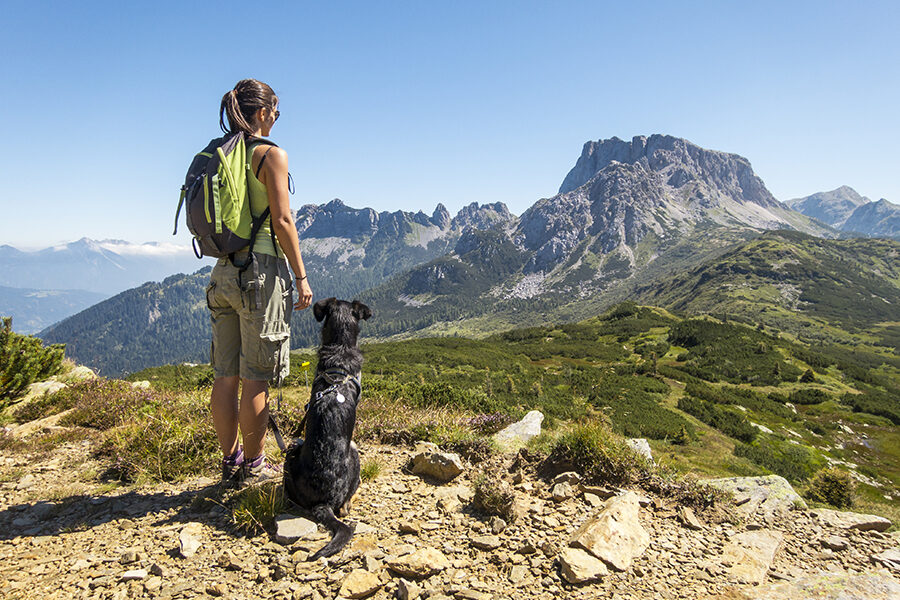It’s the monsoon season, and the adventurer in you is craving to go on a trek. But, it doesn’t seem fair to live your dog behind while you enjoy yourself with friends and family.
After all, our four-legged friends have feelings too. They might also crave going out as much as we do.
So, why don’t you take them along on a trek?
Sounds good. But how will you prepare and manage?
Worry no more! We’ve listed all the necessary safety tips that can make trekking with your tail-wagger an unforgettable experience. Read on to know more!
Pre-hiking Tips
Consult Your Vet – Before making trekking plans, getting a green flag from your vet is necessary. They might tell you about your dog’s preparedness and offer safety advice for his health.
Also, while trekking, the chances of your dog catching ticks, fleas, or getting stung by mosquitoes is higher than ever. That’s why it’s advisable to keep your dog on preventive treatment against the same.
Further, it’s better to get your dog microchipped at the vet’s clinic. So, if due to any unforeseen event your dog gets lost, he can still be reunited with you.
Warm Up by Doing Small Treks Before The Actual Trip – If it’s your dog’s first time on the trail, you must get him prepared for the same. You can do this by taking him for walks in the garden or on beaches for at least 30 minutes.
Also, look for small hills in your locality and hike there to get him accustomed to the feeling of walking for long hours, staying away from home and meeting new dogs (and people).
Due to the monsoon, the trails are likely to be wet and muddy. That’s why you should make them walk in rain boots. These boots can prevent your dog’s paws from getting dried, cut or bruised.
For a bit more exercise, you can pack a small bag with some of his essentials and make him carry it on the trail. Now, make sure that the bag is lightweight i.e it is less than 25% of your dog’s weight.
Get an Anxiety Jacket, a Well-Fitted Collar and a Leash – Dogs are more prone to get anxious while trekking due to the environment, weather, or thunderstorms.
To prevent this, you must carry an anxiety jacket, a good harness, and first aid kit. You must also add a tag on his collar so that in case he gets lost, someone can contact you.
Pack Plenty of Food, Snacks and Water for Your Fido! – Trekking can be exhausting for dogs, too. That’s why to energise them along the way, you must carry their food and water in abundance.
Also, to keep them motivated, you can give them small treats such as their favourite doggy biscuit or watermelon.
Carry Poop Bags – Leaving your dog’s poop on the trail is not only unhygienic but also unfair to others. Instead, you must carry a poop bag and pick up after him.
Tips for a Memorable Trekking Experience
Follow Trail Etiquettes – Even if your dog is calm and friendly, as a pet parent, it’s your responsibility to keep him under control on the trail. For this, getting a good leash is very important.
Apart from this, you also need to make sure that your dog doesn’t create a nuisance. For instance, unnecessarily barking at other visitors or dogs, or running in their direction. That’s why taking him for small treks before the actual visit is so important.
Try to Stay Out of the Bush – While trekking with your dog, it’s also important to avoid staying in the bush for long. The reason is that there might be venomous snakes or certain poisonous trees that can be deadly for your dog.
Take Frequent Breaks and Keep Him Hydrated – To enjoy the most, it’s recommended to take timely breaks, munch on some snacks, drink adequate water, rest and then move on with your journey.
Post-hiking Tips
Give Him Enough Rest – After a long and exhausting trek, give your dog a much-needed rest. Also, give him his favourite food, a relaxing massage, and a refreshing hot water bath.
Check for Ticks – One of the most important things to do after your little adventure is to look out for ticks on your dogs. Your dog is most likely to get them after a trek. That’s why you must comb him with a good tick comb and get rid of all those nasty little creatures.
Check His Paws For Tears or Bruises – Although it’s best to use rain boots, if you don’t, you must check your dog’s foot pads for cracks, tears or bruises. If the bruises are minor you can use regular ointments or else consult your vet at the earliest.
Schedule a Vet Visit – In the worst-case scenario, if your pup shows any signs of fever or cold, immediately schedule a vet visit for further treatment.







